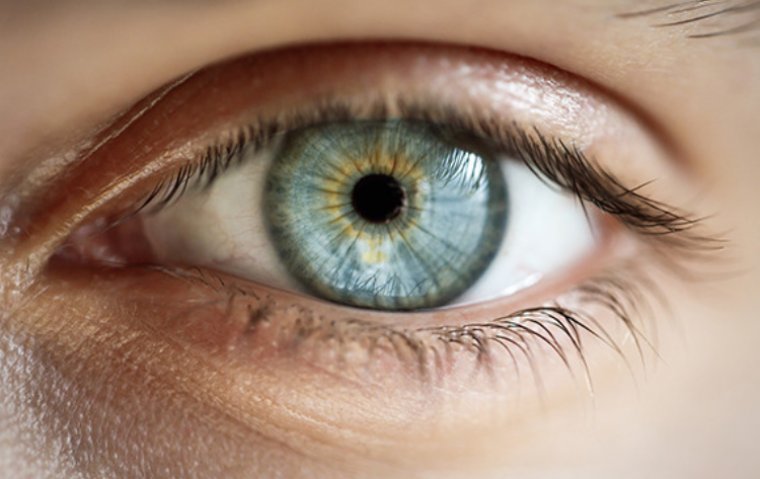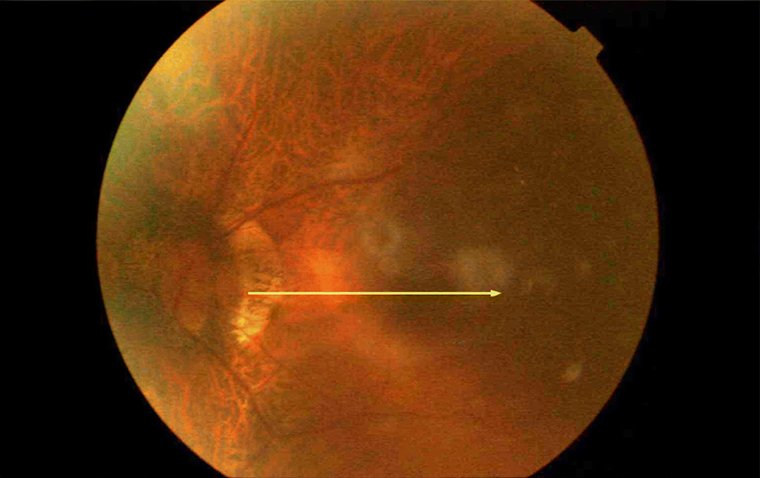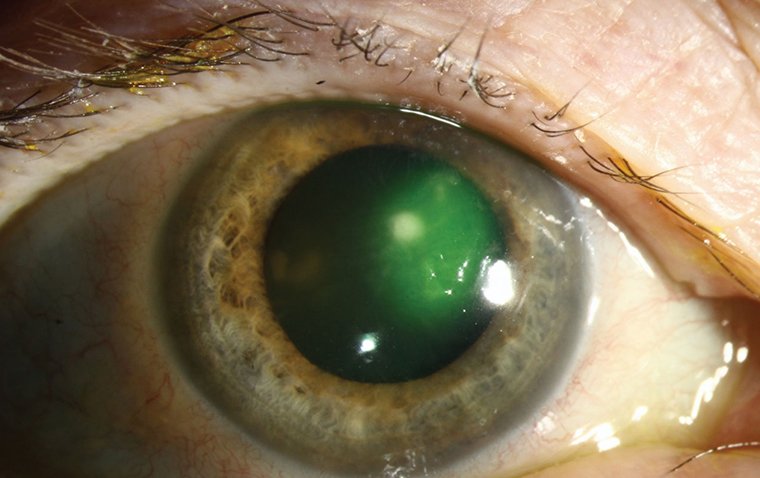
2023 Recap: Top 15 Medical Devices Revolutionizing Ophthalmology
In a groundbreaking year for ophthalmic advancements, 2023 has witnessed the launch of cutting-edge medical devices that promise to reshape the landscape of eye care. From augmented reality headsets to innovative surgical systems, the field is experiencing a wave of technological breakthroughs aimed at enhancing diagnostics, treatment, and patient outcomes.
Here is a list of the top 15 innovative medical devices without any specific order.
1. Ocutrx Unveils Oculenz AR-XR Headset
.jpg)
Ocutrx Technologies has unveiled the OcuLenz AR/XR headset, a state-of-the-art device specifically crafted to enhance visual clarity and expand possibilities for individuals dealing with advanced age-related macular degeneration.
Distinguished by its lightweight and user-friendly design, the OcuLenz AR/XR headset sets itself apart from traditional magnification aids. It employs advanced pixel manipulation software to overlay high-contrast, pixel-manipulated images onto the user's remaining viable field of view. This groundbreaking system processes real-world video imagery and transforms it into an augmented reality display tailored to the user's remaining good vision. The result is a cutting-edge solution that redefines the visual experience for those with advanced age-related macular degeneration.
Discover the innovative "Oculenz AR-XR Headset" designed to transform vision correction and enhancement.
2. Belkin's Eagle Device Gains FDA Clearance for SLT
.jpg) Belkin Vision has secured FDA 510(k) clearance for its Eagle device, a Q-switched Nd:YAG laser operating at a 532 nm wavelength, designed specifically for selective laser trabeculoplasty (SLT).
Belkin Vision has secured FDA 510(k) clearance for its Eagle device, a Q-switched Nd:YAG laser operating at a 532 nm wavelength, designed specifically for selective laser trabeculoplasty (SLT).
Being the first contactless laser for glaucoma by Belkin, the Eagle introduces an automated and noninvasive solution for both patients and healthcare professionals.
Central to the Eagle's innovation is its non-contact approach, directing laser energy directly through the limbus to the trabecular meshwork without the need for a gonioscopy lens. Additionally, the device features an automated system to define the target location and execute the laser treatment sequence. The built-in eye tracker compensates for any eye movement during the procedure, ensuring utmost precision in treatment delivery.
Discover how the FDA-cleared Eagle device for SLT by Belkin is revolutionizing glaucoma treatment.
3. FDA Clears Johnson & Johnson Vision's Elita Femtosecond Laser
.jpg) Johnson & Johnson Vision has been granted FDA 510(k) clearance for its Elita Femtosecond Laser, designed for crafting LASIK flaps. The Elita laser boasts features such as confidence, speed, and accuracy, attributed to its low energy per pulse, ultra-fast laser repetition rate, and small spot size (1µm). Offering a smooth stromal bed for easy flap lifting, the Elita laser stands out with sub-micron precision, establishing itself as an industry-leading device.
Johnson & Johnson Vision has been granted FDA 510(k) clearance for its Elita Femtosecond Laser, designed for crafting LASIK flaps. The Elita laser boasts features such as confidence, speed, and accuracy, attributed to its low energy per pulse, ultra-fast laser repetition rate, and small spot size (1µm). Offering a smooth stromal bed for easy flap lifting, the Elita laser stands out with sub-micron precision, establishing itself as an industry-leading device.
Engineered for exceptional ease and efficiency in practices, the Elita laser presents an intuitive user interface, modular design, and a rapid system startup time of less than 5 minutes. Beyond convenience, it incorporates features aimed at reducing complications, enhancing visual outcomes, and facilitating fast visual recovery, ultimately contributing to superior patient outcomes.
Learn about Johnson & Johnson Vision's Elita Femtosecond Laser, now FDA-cleared for eye surgeries.
4. Lumenis Launches OptiPlus RF Energy Device
.jpg) Lumenis has launched the OptiPlus dual-frequency radiofrequency (RF) device, designed to efficiently distribute heat across various tissue layers. This innovative technology aims to enhance blood circulation, improving both medical performance and aesthetic outcomes.
Lumenis has launched the OptiPlus dual-frequency radiofrequency (RF) device, designed to efficiently distribute heat across various tissue layers. This innovative technology aims to enhance blood circulation, improving both medical performance and aesthetic outcomes.
Complementing Lumenis' OptiLight technology, which addresses dry eye disease's underlying causes, OptiPlus plays a pivotal role in elevating clinical results. While OptiLight disrupts dry-eye inflammation through light-based technology, OptiPlus utilizes RF energy to penetrate multiple skin depths. This FDA-cleared device raises the superficial layer's temperature, promoting collagen production for peri-orbital skin rejuvenation. Simultaneously, it targets deeper tissues to address meibomian gland dysfunction, as stated by the company.
5. Topcon Introduces Tempo Perimeter
.jpg) Topcon has launched the Tempo Perimeter at the American Academy of Ophthalmology (AAO) meeting in San Francisco.
Topcon has launched the Tempo Perimeter at the American Academy of Ophthalmology (AAO) meeting in San Francisco.
According to Topcon, Tempo offers swift, precise, and comfortable visual field testing, surpassing Standard Automated Perimetry (SAP) by 39%¹ in clinical testing. It operates effectively in ambient light and maintains excellent repeatability².
Tempo's binocular approach is intentionally crafted to enhance testing speed and patient comfort, facilitating effective screening to advanced glaucoma assessment, all while ensuring accuracy, as highlighted by the company. Additionally, the device alleviates fatigue for both patients and operators.
Discover Visionix's VX-650, the second-generation multimodal screener by Topcon.
6. Heidelberg Engineering Secures FDA Clearance for Anterion Platform
.jpg)
Heidelberg Engineering has received FDA clearance for its Anterion Platform, an integrated solution crafted to elevate anterior segment diagnostics and streamline practice workflow.
As a comprehensive and upgradeable platform, Anterion seamlessly integrates biometry, IOL power calculation, corneal topography and tomography, anterior chamber metrics, and high-resolution imaging. This amalgamation enhances day-to-day clinical routines.
Incorporating proprietary features like patented eye tracking and composite imaging technologies, Anterion ensures superior image quality. This empowers eye care professionals to conduct detailed anterior segment examinations and acquire crucial measurements through high-resolution swept-source OCT images, thereby strengthening clinical decision-making and diagnostic confidence.
7. C-Lights Retinal Eye Movement Monitor Receives FDA Clearance
.jpg)
C. Light Technologies has obtained 510(k) clearance from the U.S. Food and Drug Administration (FDA) for its pioneering device, the Retitrack. This groundbreaking technology seeks to transform our comprehension of oculomotor function by leveraging the retina, providing healthcare professionals with tangible and objective metrics.
The Retitrack is a monocular, tabletop eye movement monitor meticulously created to capture, visualize, measure, and analyze the temporal aspects of fixation and saccadic responses to visual stimuli. Primarily intended for use in healthcare settings like physician's offices, clinics, and laboratories, it aims to aid healthcare practitioners in their work.
8. Norlase's Echo Green Pattern Laser Granted FDA 510(k) Clearance
.jpg)
Norlase's ECHO Green Pattern Laser photocoagulator has received both FDA 510(k) clearance and CE Mark approval. Employing MEMS technology, the ECHO is a portable scanning laser photocoagulator that integrates the laser and scanner into a single delivery device, attachable to compatible slit lamps.
Equipped with distinctive features such as no external fiber, a wireless user interface, µSec Mode for tissue-sparing treatment, and voice control of patterns and parameters, the ECHO Green Pattern Laser photocoagulator stands out.
According to Norlase, the ECHO offers an affordable price point, aiming to make pattern scanning technology accessible to more doctors globally. This, in turn, provides healthcare professionals with efficient treatment tools and the ability to enhance patient throughput.
9. Visionix Introduces Second Generation VX-650 Multimodal Screener
.jpg) Visionix has introduced the second generation of its VX 650 multimodal device, initially launched in 2021 as an advanced anterior segment analyzer with retinal imaging capabilities. The updated version showcases an enhanced wavefront-based aberrometer featuring a "quick mode" and new capture flexibilities. These additions can reduce screening time by up to 50%, enhancing overall product efficiency.
Visionix has introduced the second generation of its VX 650 multimodal device, initially launched in 2021 as an advanced anterior segment analyzer with retinal imaging capabilities. The updated version showcases an enhanced wavefront-based aberrometer featuring a "quick mode" and new capture flexibilities. These additions can reduce screening time by up to 50%, enhancing overall product efficiency.
The VX 650 offers a cost-effective solution for a comprehensive eye exam suite, whether at a new or additional location, especially when paired with a compatible refraction system like the Eye Refract. Its user-friendly interface and quick staff adoption allow clinicians to delegate the entire data collection process to a technician with minimal training, instilling greater confidence in the screening process.
Click here to read the full article.
10. Nidek Launches Cube Alpha Ophthalmic Surgical System
.jpg) Nidek has unveiled the Cube α ophthalmic surgical system, introducing innovative ultrasound technology to elevate phacoemulsification procedures.
Nidek has unveiled the Cube α ophthalmic surgical system, introducing innovative ultrasound technology to elevate phacoemulsification procedures.
The Cube α incorporates Gyro torsional technology within its compact design, optimizing the delivery of ultrasound energy, especially for moderate cataracts. These design enhancements prioritize surgical safety by protecting intraocular tissues.
With a straight Gyro tip design for easy handling and reduced fluid turbulence during lens emulsification, Nidek emphasizes the Cube α's commitment to safety. The Neo sleeve series, featuring improved fluid dynamics and enhanced anterior chamber stability, further contributes to a more efficient and secure surgical outcome through improved fluid dynamics in the eye.
Check out NIDEK's launch of the Cube Alpha Ophthalmic Surgical System, a leap forward in precision eye surgery technology.
11. FDA Grants Breakthrough Device Designation to Pixium Vision's Prima System for Dry AMD
.jpg) Pixium Vision's Prima System, a photovoltaic alternative for photoreceptors, has received Breakthrough Device Designation from the FDA. Tailored for individuals with atrophic dry age-related macular degeneration (AMD), the Prima System is implanted to partially restore vision. It allows simultaneous use of the central prosthetic and peripheral natural vision.
Pixium Vision's Prima System, a photovoltaic alternative for photoreceptors, has received Breakthrough Device Designation from the FDA. Tailored for individuals with atrophic dry age-related macular degeneration (AMD), the Prima System is implanted to partially restore vision. It allows simultaneous use of the central prosthetic and peripheral natural vision.
The Prima System seeks to generate functional artificial, or bionic, vision by introducing light perception to partially replace lost natural central vision. Consisting of three key components, the Prima System includes a wireless retinal implant, a pair of glasses with a camera and digital projector, and a pocket processor.
12. PEEQ PRO Launches Multipurpose Eyelid Cleansing Device
.jpg) Peeq Pro has launched the Peeq Waiva, a revolutionary at-home cleansing device crafted for daily use in cleansing eyelids and the surrounding skin. This device is created to be an integral part of a patient's regular eye cleansing routine, aiming to gently and effectively enhance eye hygiene while potentially alleviating dry eye symptoms.
Peeq Pro has launched the Peeq Waiva, a revolutionary at-home cleansing device crafted for daily use in cleansing eyelids and the surrounding skin. This device is created to be an integral part of a patient's regular eye cleansing routine, aiming to gently and effectively enhance eye hygiene while potentially alleviating dry eye symptoms.
The Peeq Waiva boasts a distinctive, patent-pending design that incorporates an organic sponge with vibration to effectively loosen and absorb eye makeup. Additionally, it features a bristled side surface for cleaning the entire face.
Explore the PEEQ Pro's new multipurpose eyelid cleansing device, designed for enhanced eye hygiene and health.
13. Tracey Technologies Announces New Features for iTrace Aberrometer
.jpg) Tracey Technologies has launched iTrace Prime, an enhanced software version for the iTrace Ray Tracing aberrometer and corneal topographer.
Tracey Technologies has launched iTrace Prime, an enhanced software version for the iTrace Ray Tracing aberrometer and corneal topographer.
The recent software update (7.0) improves the information gathering capabilities of the single device, according to the company's announcement. The "Prime Dashboard" now includes two additional indices: the Corneal Performance Index (CPI) and the Quality of Vision Index (QVI), in addition to the proprietary Dysfunctional Lens Index (DLI).
Explore the latest advancements in eye care with Tracey Technologies' new features for the iTrace Aberrometer.
14. Centricity Vision’s ZEPTOLink IOL Positioning System
.jpg) Centricity Vision announced the commercial launch of its ZEPTOLink IOL Positioning System in the United States. This innovative platform seamlessly combines ZEPTO precision pulse capsulotomy technology with various phaco systems, streamlining the process of cataract surgery.
Centricity Vision announced the commercial launch of its ZEPTOLink IOL Positioning System in the United States. This innovative platform seamlessly combines ZEPTO precision pulse capsulotomy technology with various phaco systems, streamlining the process of cataract surgery.
Designed to enhance the precision and efficiency of cataract surgery, the ZEPTO IOL Positioning System™ is the sole device capable of generating an immediate capsulotomy, ensuring precise 360-degree IOL overlap and superior outcomes. ZEPTOLink marks the next evolution of this technology, specifically beneficial for premium IOLs and intricate cases requiring heightened precision. Moreover, the technology provides significant cost and time savings through seamless workflow integration, resulting in improved efficiency for each case.
Learn about the ZEPTOLink IOL Positioning System by Centricity Vision.
15. Cassini Launches Cassini Connect Digital Cataract Surgery Suite
.jpg)
Cassini has introduced Cassini Connect, a digital suite tailored for cataract surgery. Compatible with most major microscope brands, Cassini Connect provides an integrated workflow and data solution for cataract surgery.
The suite comprises pre-op diagnostics, digital ocular registration and marking, cloud-based surgery planning, and intra-op visualization and guidance. Cassini asserts that utilizing their digital ocular registration instead of the traditional preoperative corneal ink marking method can save cataract surgeons 7 minutes per patient.
Conclusion
As the ophthalmic field continues to evolve, these groundbreaking devices mark a significant step forward in improving patient care, expanding treatment options, and advancing the capabilities of eye care professionals. Stay tuned for further developments as these innovations shape the future of ophthalmology.
(1).jpg)










